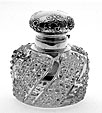Researching Libbey Cut Glass Pattern Names, 1896 - 1923
By Carl U. Fauster
Reprinted from The Glass Review, November 1985
In the reference library of the Antique & Historic Glass Foundation, we have original or photocopies of 14 different Libbey Cut Glass catalogs illustrating patterns made luring the years from 1896 to 1920. These catalogs record the official pattern names assigned by the factory, reviewed here for information of interest to collectors.
For ready reference to these pattern names, we compiled a library style catalog card file. Arranged alphabetically, there are 68 names from "AZORA" to "ZOG". Also, some illustrated patterns are assigned only numbers and a few with just letters. Such identification indicates that names were bypassed due to lack of originality. In addition, over many years some names are duplicated for different patterns.
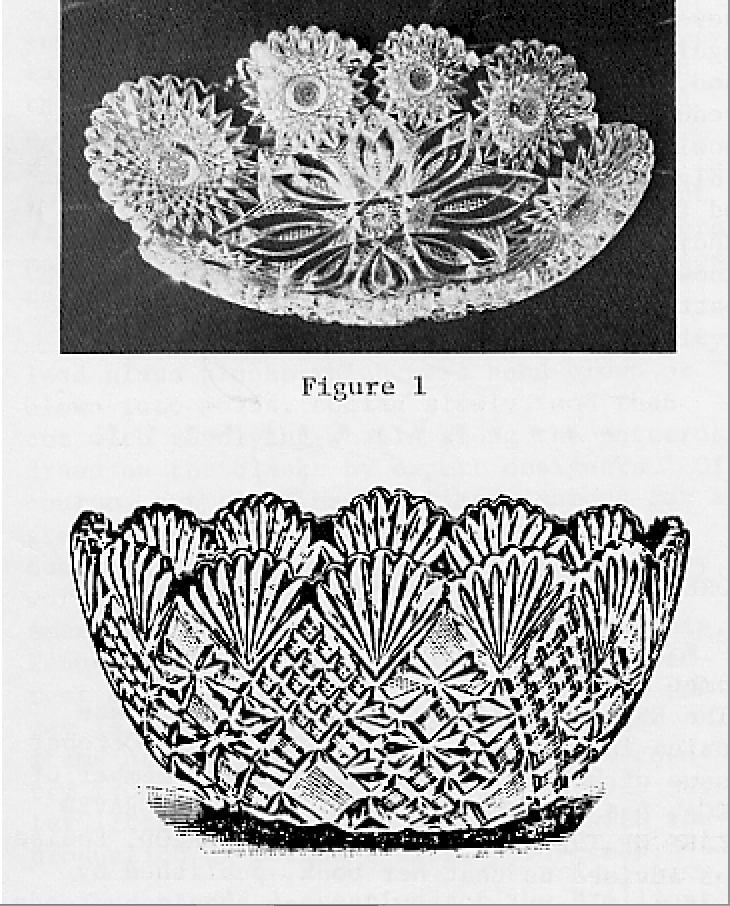 Examining these pattern names we find some are descriptive of the individual cutting,
such as "PLAIN FLUTE" (1909), "DIAMOND & FAN" (1893) and
"PRISM" (1898). Most other names seem to be just haphazard selection, but a few
do have specific reasons of choice.
Examining these pattern names we find some are descriptive of the individual cutting,
such as "PLAIN FLUTE" (1909), "DIAMOND & FAN" (1893) and
"PRISM" (1898). Most other names seem to be just haphazard selection, but a few
do have specific reasons of choice.
Names that tie-in with the Libbey factory at the 1893 World’s Columbian Exposition, so named because it was to honor the discovery of America (originally planned for 1892, the 400th anniversary, it was not ready to open on time and delayed a year) include "COLUMBIA’ (1893) (Fig. 1), "PRINCESS" (1896) (Fig. 2) and "EULALIA" (1896) (Fig. 3). The last two were in connection with Princess Eulalia, the official representative of Spain’s Royal Family to visit the Fair and for whom Libbey made a spun glass dress. (See May ‘85 HOBSTAR, pg. 8).

Finally we feel the "FLORENCE" (1893) (Fig. 4) name was chosen as a tribute to Edward Drummond Libbey’s wife, Florence Scott, whom he married in 1891.
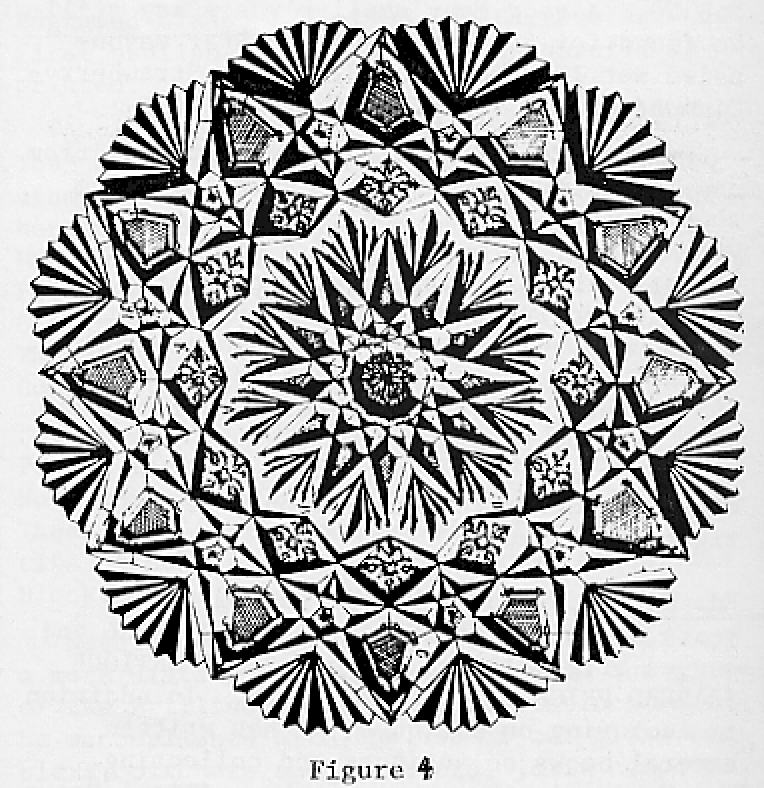
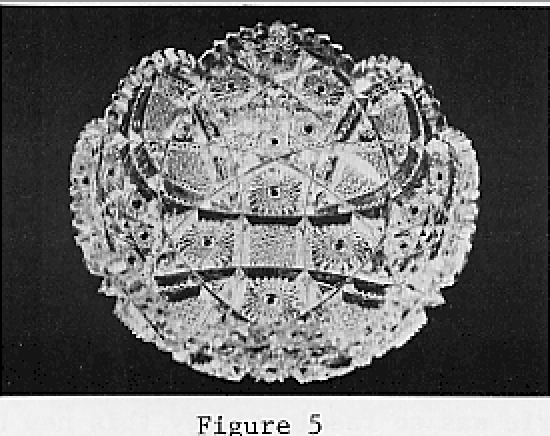 My favorite pattern name is the pattern name is the "MARCELLA" (1896) (Fig. 5), probably because
of what I was told by Bob Bartley who cut glass at Libbey from 1907 until 1913. He told me
that "MARCELLA" was the most difficult pattern* to cut and that he was one of
only four crafts-men, sufficiently skilled to execute this pattern at a time when Libbey
employed some 200 cutters. Bob said that he pestered Ed Nolan, a co-worker, until Nolan
showed him the so-called trick. After learning, Bob claimed it was relatively easy;
however, cutters, like magicians, would not reveal the trick and would keep it a secret
from other craftsmen!
My favorite pattern name is the pattern name is the "MARCELLA" (1896) (Fig. 5), probably because
of what I was told by Bob Bartley who cut glass at Libbey from 1907 until 1913. He told me
that "MARCELLA" was the most difficult pattern* to cut and that he was one of
only four crafts-men, sufficiently skilled to execute this pattern at a time when Libbey
employed some 200 cutters. Bob said that he pestered Ed Nolan, a co-worker, until Nolan
showed him the so-called trick. After learning, Bob claimed it was relatively easy;
however, cutters, like magicians, would not reveal the trick and would keep it a secret
from other craftsmen!
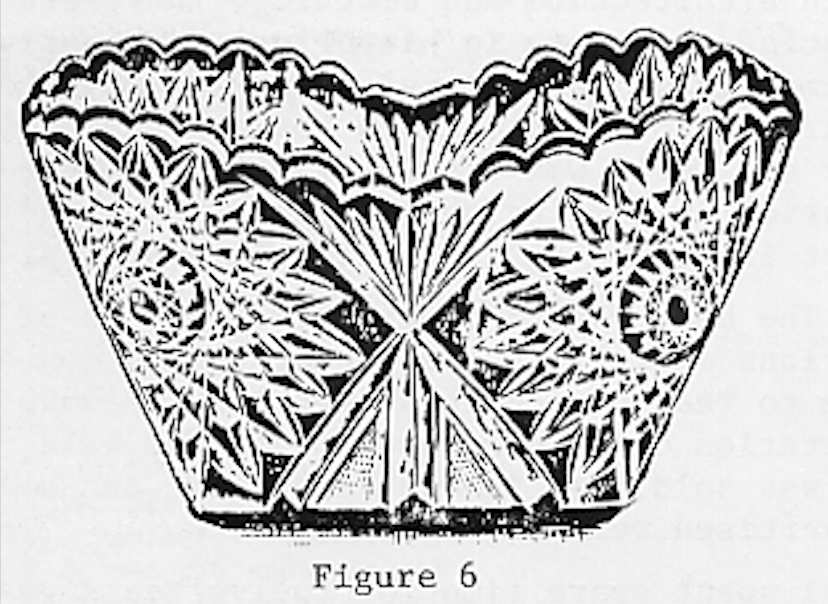 We did find an instance of explaining the choice of a pattern name. Libbey’s 1893
World’s Fair booklet, FACTS ON CUT GLASS, tells us the "KIMBERLY" pattern
(Fig. 6) was named in honor of the Kimberly diamond mines in South Africa, by reason of
its remarkable brilliancy, which is surpassed only by the lustre of the diamond.
We did find an instance of explaining the choice of a pattern name. Libbey’s 1893
World’s Fair booklet, FACTS ON CUT GLASS, tells us the "KIMBERLY" pattern
(Fig. 6) was named in honor of the Kimberly diamond mines in South Africa, by reason of
its remarkable brilliancy, which is surpassed only by the lustre of the diamond.
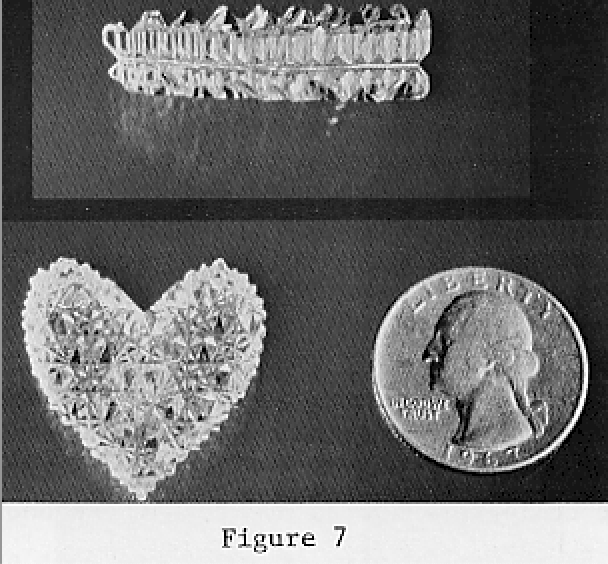 *Fig. 7 illustrates a small heart cut in the Marcella pattern by Bob Bartley when at
Libbey. This piece compared in size to a quarter also shows a side view at top which
indicates the minute diamond point cuts.
*Fig. 7 illustrates a small heart cut in the Marcella pattern by Bob Bartley when at
Libbey. This piece compared in size to a quarter also shows a side view at top which
indicates the minute diamond point cuts.



